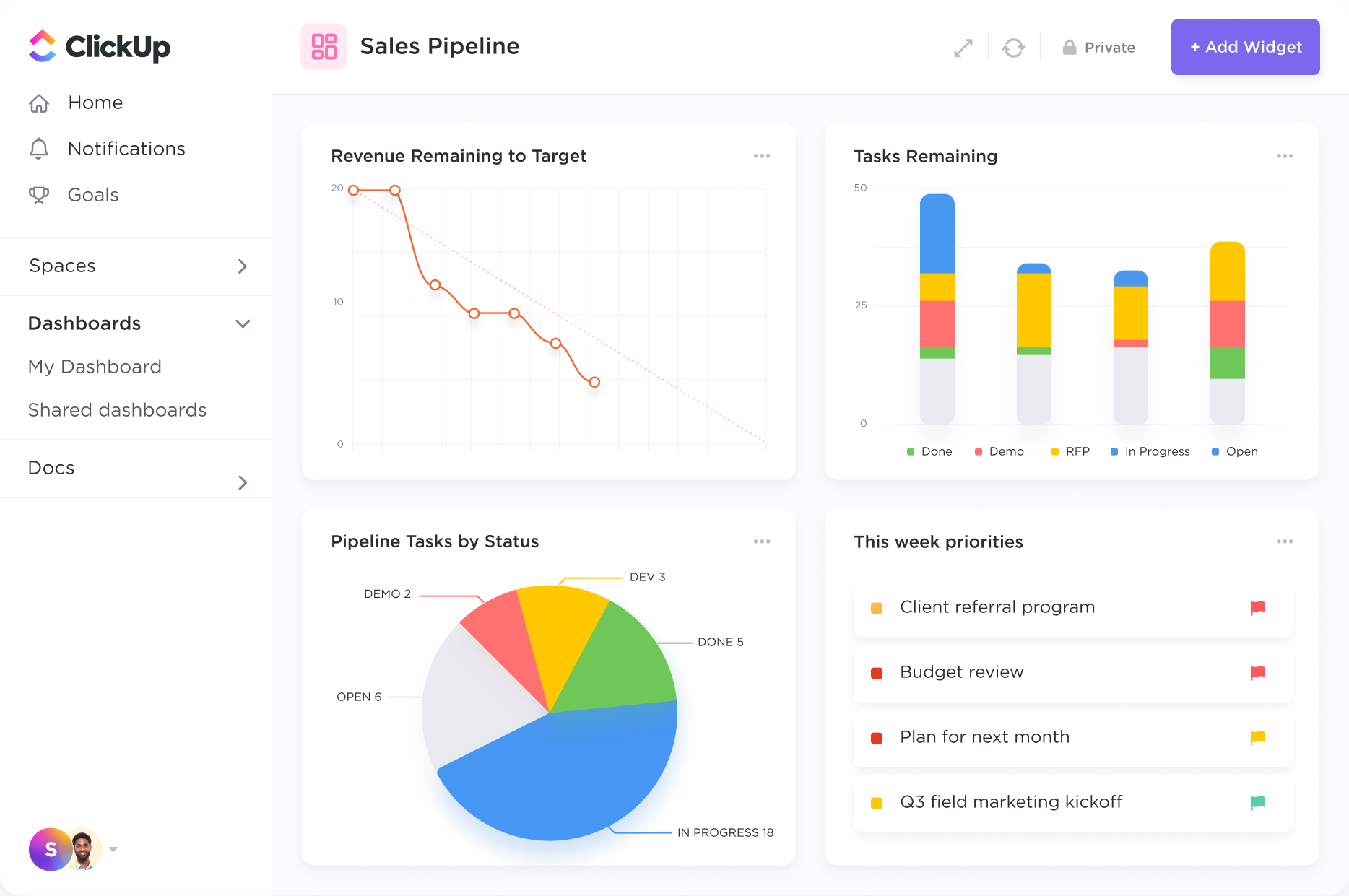Analyze data for customer insights.
Create high-level views to monitor customer lifetime value, average deal sizes, and more. ClickUp's 50+ Dashboard widgets make it easy to visualize all of your customer data in one place.

Optimize your client relationships with ClickUp's customizable CRM system designed specifically for Translators. Streamline your workflow, track projects efficiently, and enhance collaboration with your team all in one place. Try ClickUp today and experience a seamless approach to managing your customer relationships.
Free forever.
No credit card.
Trusted by the world’s leading businesses
Create high-level views to monitor customer lifetime value, average deal sizes, and more. ClickUp's 50+ Dashboard widgets make it easy to visualize all of your customer data in one place.

Manage everything from sales pipelines, customer engagement, and orders with ClickUp's 10+ highly flexible views. Easily track and manage your accounts on a List, Kanban Board, Table view, and more.

CRM software can streamline the translation process for translators by centralizing project information, facilitating collaboration among team members, automating workflows, and providing a platform for managing translation projects efficiently.
Look for CRM software that offers multilingual support, customizable fields for language preferences, integration with translation tools, and the ability to track communication history in different languages.
Yes, CRM software can help you keep track of client communications and invoices for translation services, making it easier to manage client interactions, track project progress, and streamline invoicing processes for improved efficiency and organization.